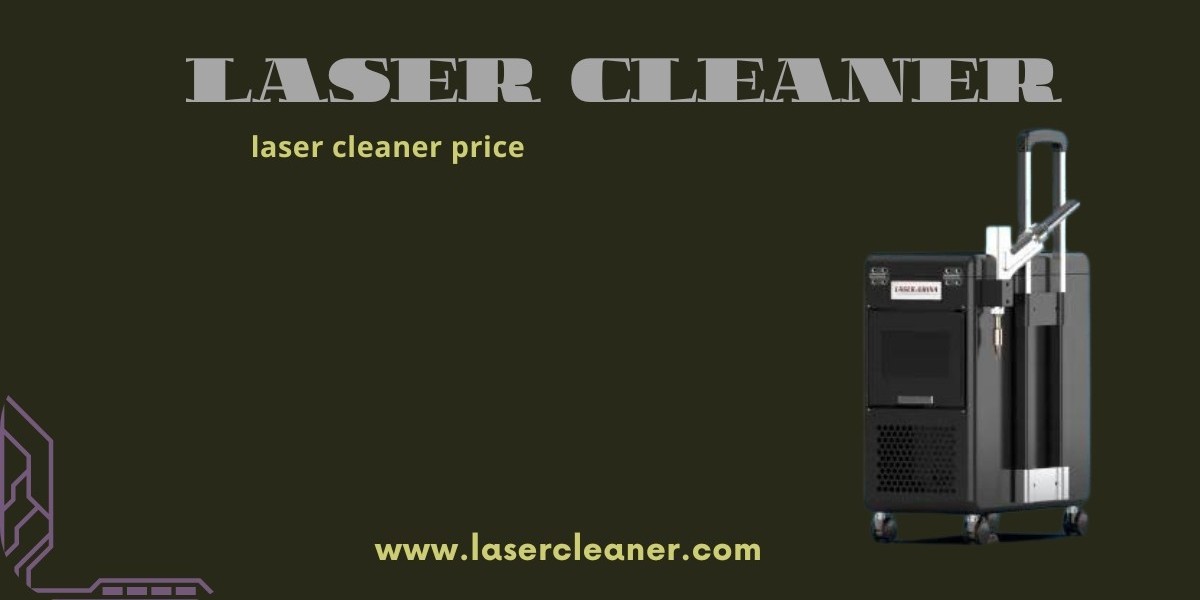Industrial laser cleaning technology has revolutionized surface cleaning in a variety of industries, offering an innovative and highly effective method for removing contaminants like rust, paint, oils, and dirt from metal surfaces. Unlike traditional cleaning methods that often involve abrasive materials, chemicals, or mechanical systems, laser cleaning uses high-intensity laser beams to remove unwanted substances.
Working Principle:
At the core of laser cleaning technology is a laser beam that delivers pulses of concentrated light energy to the surface of a material. When the laser strikes the surface, it generates rapid thermal energy that causes contaminants, such as rust, paint, or grime, to absorb the energy and evaporate or be blown away by the force of the laser's pulse.
The laser can be finely controlled to adjust the power, frequency, and pulse duration, which allows for precision cleaning. This ensures that only the contaminants are removed, and the underlying material, often metal, remains intact without any damage. The process can be finely tuned depending on the type of contamination and the material being cleaned.
Applications:
Laser cleaning is used across many industries, particularly in fields that require high precision and efficiency. Here are some of its major applications:
Manufacturing and Metalworking:
- Rust Removal: Laser cleaners are frequently used to remove rust from metal surfaces without damaging the underlying material. This is particularly valuable in the automotive and aerospace industries, where metal parts need to be free from rust before coating or further processing.
- Paint and Coating Removal: Laser cleaning can also strip paint or coatings from metal surfaces, making it ideal for applications where the removal of old coatings is required before re-coating or repainting.
Automotive Industry:
- Laser cleaning is used to prepare metal parts for welding, coating, or other finishing processes. It is a non-abrasive method, so it does not compromise the integrity of the metal parts.
Restoration of Heritage Objects:
- In the art and heritage preservation sectors, laser cleaning is often used to restore delicate objects, sculptures, and buildings. This allows for the removal of dirt, soot, or corrosion without harming the original material, which is often fragile.
Electronics and Semiconductor Manufacturing:
- In electronics, where even the smallest contamination can lead to defects, laser cleaning is used to ensure that components are free of dust, oils, or other contaminants before assembly.
Shipbuilding and Construction:
- In shipbuilding and construction, laser cleaning is applied to prepare surfaces for welding, coating, or painting. This technology can be used to clean large, complex structures where traditional methods may be inefficient or difficult.
Benefits:
Non-contact and Non-abrasive: Unlike mechanical or chemical cleaning methods, laser cleaning does not require direct contact with the surface, minimizing the risk of surface damage. This makes it an ideal method for sensitive or easily damaged materials.
Environmentally Friendly: Laser cleaning is a green technology. It does not require the use of harmful chemicals, solvents, or abrasive materials, reducing the environmental impact and making it safer for workers.
Cost-Effective: Although the initial investment in laser cleaning equipment can be high, the long-term costs are lower due to the minimal use of consumables (like chemicals or abrasive materials) and the efficiency of the process. Moreover, laser cleaning often reduces labor and downtime, leading to overall cost savings.
Precision: Laser cleaning can be highly controlled, making it ideal for cleaning delicate or intricate surfaces where precision is required. This control over the process ensures that only contaminants are removed, while the underlying material is untouched.
Minimal Waste: As there are no chemicals or abrasives involved in laser cleaning, the amount of waste generated is significantly lower compared to traditional cleaning methods, further enhancing its eco-friendly nature.
Versatility: Laser cleaners can be used on a wide range of materials, including metals, plastics, and even organic materials, offering flexibility across industries.
Conclusion:
Industrial laser cleaning has proven to be a highly efficient, precise, and environmentally friendly solution for surface cleaning in various industries. Its ability to remove contaminants without damaging the underlying material, coupled with its versatility and minimal waste production, makes it a valuable tool for manufacturers, restorers, and other professionals. With ongoing advancements in laser technology, the applications and benefits of laser cleaning are likely to expand even further, offering more industries a sustainable alternative to traditional cleaning methods.








